|
The still high inflation and the potential reaction from the Fed continue to dominate the financial market news. Last Friday when Powell gave a short speech on how the Fed will move forward, stock markets crashed amid a more hawkish stance than expected. He emphasized that inflation has to be brought down relatively soon even if it hurts businesses and households, at least in the short term. Although inflation decreased for the first time in months, the inflation rate is still way too high at 8.5%. Following the speech, another 75bps hike is not outside the realm of possibility. Unlike earlier estimates, it is also likely that the federal fund rate will be around 4% in the short term and will persist for some time. The degree of interventions does depend substantially on the economic data and whether the measures taken achieve their intended goals. This led to a massive drop in equity prices, such as the Dow Jones which dropped more than 1,000 points in a single day. It also hurt cryptocurrencies substantially. Bitcoin dropped below the $20k mark for the first time since June. In Europe, the situation looks very different. While inflation is still soaring with a new record high of 8.9% in 2022, its interest rates are still at 0bps even after its 50bps hike in July. It is likely that inflation will continue to soar even if substantial rate hikes take place soon. The ECB’s measures have been very mild compared to the Fed’s and other central banks and were widely expected to stay on the milder side. However, with the continuously growing inflation, the ECB is forced to intervene. For its September meeting, it is expected that a rate hike of at least 50bps will take place, if not 75bps. These developments also make a recession in Europe more and more likely. The impact of the war, especially energy as a whole, further exacerbates this likelihood. In the UK, inflation is an even bigger problem, as the 10% mark was surpassed in July 2022. This is very relevant, as the BoE was very active in 2022 in rising interest rates while the ECB was not. The BoE’s current base rate is at 1.75% after five small interest rate hikes from December 2021 to June 2022 and the subsequent 50bps hike at the beginning of August. For the next meeting, another 50bps or even 75bps are considered as likely. Current expectations are around a base rate peak of 3.75% at the beginning of the next year. It is questionable whether the rate will in fact be “that low”, as the Fed pointed out 4% for a while is a possibility. This is concerning for the UK, as the US has both, a lower inflation and a currently decreasing inflation.
Alternative Markets Outlook H2 2022
Inflation will likely dominate the news in the latter half of 2022. It is likely to stay high although decreasing. Exact predictions are always difficult, especially in such a market environment. This is also observable in the research from economists who struggle to predict accurately, as employment is high, GDP is shrinking, and the current inflation issues. Whether inflation will in fact slow down is largely dependent on the ongoing war between Russia and the Ukraine, as energy and food are the main drivers behind the current inflation levels. Regardless of how the war ends, even if soon, there is a low chance that the energy supply of Russia to Europe will ramp up significantly. There may be some help from the OPEC+ countries in alleviating the problem but high energy prices are obviously beneficial for them. Food inflation on the other hand is likely to go down to some degree, as the Ukraine is a key supplier assuming that it remains independent. The energy situation will get very tense during the winter, as Europe is expecting energy shortages. It is likely that energy inflation will spike there. Afterward, in early and mid-2023, the situation likely will improve. At that point, energy prices have a chance to enter a deflationary state, as inflation is measured on a year-on-year basis, in particular when considering that energy inflation is higher than 40% in the US for example. The remaining subcategories in inflation measures are more affected by actual central bank measures. In particular, the US and the UK have taken substantial measures to combat current inflation. At least in the US, the measures have relieved some of the pressure as the monthly inflation fell for the time in a couple of months. However, this does not ease the pressure, as such events must be persistent. It is likely that this will continue, especially if the Fed keeps rising its interest rates, which some of the board members intend to do. It is expected that inflation will keep going down during 2022 and 2023. Frequently expected intervals estimate inflation to be between 2% and 4% towards the end of this period. Figure 1 shows expectations for the core CPI in the year 2023 alongside a lagged M2 growth measure. In Europe, the situation in terms of food and energy is more dire, due to its direct reliance on Russia. However, energy inflation surprisingly is lower than in the US but is rapidly growing, especially with the current concerns about the winter ahead. In terms of central bank measures, it becomes a bit more tricky, as the ECB has to manage many countries and consider their economic situation. This is where its major problem occurs, as large countries, such as Italy, are in a dangerous position. Its debt level is extremely high and it is potentially at risk of defaulting if interest rates should rise. On the other hand, the ECB has to combat the ever-soaring inflation by rising the interest rates. This dilemma will likely reduce the ECB's capabilities to combat inflation by rising interest rates as the UK or the US did. Most likely, this will cause inflation to be mitigated slower and to a lower degree. It is therefore expected that inflation in Europe will still rise in the latter half of 2022 and decline slower than in the US or the UK. This assumption is based on a status quo-like ongoing war. Nonetheless, sudden events can massively alter this outcome. Contrary to the outlook of Europe, the US’s development in July 2022 is largely positive. Firstly, it managed to reduce inflation slightly for the first time in multiple months. Secondly, US employment is back at pre-Covid levels and at the highest since 1969. While the economy lost 22 million jobs in the first two months of the Covid outbreak, in July 2022, it regained all of them. The impressive recovery is shown in Figure 2.
Alternative Markets Summary H1 2022
Ever since Covid-19 has subsided from the daily news, inflation has taken over. Inflation is still a major concern in the current economy. This is further exacerbated by central bank interventions that have not been fruitful yet. An additional major contributor is the ongoing war between Russia and Ukraine. As of June 2022, inflation in the US is at 9.1%, the highest it has been in the past 40 years. In the Eurozone, inflation is slightly lower at 8.6%. The UK’s inflation is even higher at 9.4%. Asian countries, such as Japan and China, managed to keep their inflation relatively low at 2.4% and 2.5%. The development of inflation over the past year is summarized in Figure 1. For Western countries, inflation has more or less continuously risen. The US started the year with inflation close to over 5%, while European countries were close to 2%. Nonetheless, Europe has caught up to the US since April, when the UK’s inflation even got higher than the US’s. A potential reason for the higher inflation in the US at the beginning of the year and back until the latter half of 2021 is the rapid and steep unconventional measures taken by the Fed. This faster intervention led to more money being in the economy earlier, which theoretically should lead to higher inflation earlier. Figure 2 shows the growth in the balance sheet indexed to January 2019. Once Covid-19 hit the economy, the US reacted a lot faster and in higher magnitudes than Europe did. Within the first months, the Fed’s balance sheet grew by almost 70%, while the ECB’s only grew by 25% in the same time frame. Since then, the two central banks acted equivalently in terms of balance sheet growth. Very recently, the central banks started to shrink their balance sheets. These measures were announced during Q2 2022 and are slowly implemented. Going forward, this balance sheet shrinking will be strengthened, which is confirmed by an announcement from the ECB recently. Nonetheless, as the graph shows, these measures barely affect the original measures taken to combat the economic consequences of Covid-19. The low inflation in China largely stems from the consequences of their zero-Covid policy. In recent months, many places have been shut down to control the spread of Covid. This led to low production levels and low demand which is reflected in the low inflation levels of the country. In the case of Japan, inflation of above 2% is significant, as the average inflation during the past three decades was only 0.3%. Its inflation largely stems from the consequences of the war and the impact it has on food and energy. |
|
|
Stone Mountain Capital LTD is authorised and regulated with FRN: 929802 by the Financial Conduct Authority (‘FCA’) in the United Kingdom. The website content is neither an offer to sell nor a solicitation of an offer to buy an interest in any investment or advisory service by Stone Mountain Capital LTD and should be read with the DISCLAIMER. © 2024 Stone Mountain Capital LTD. All rights reserved. |


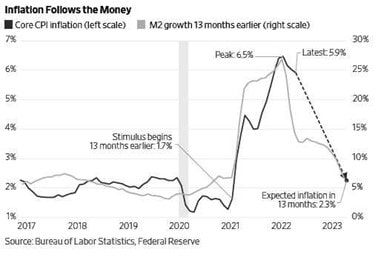
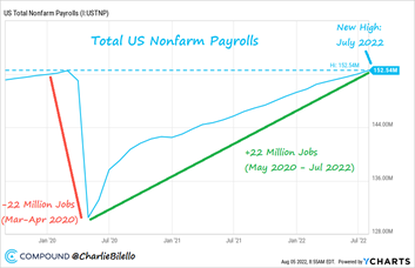
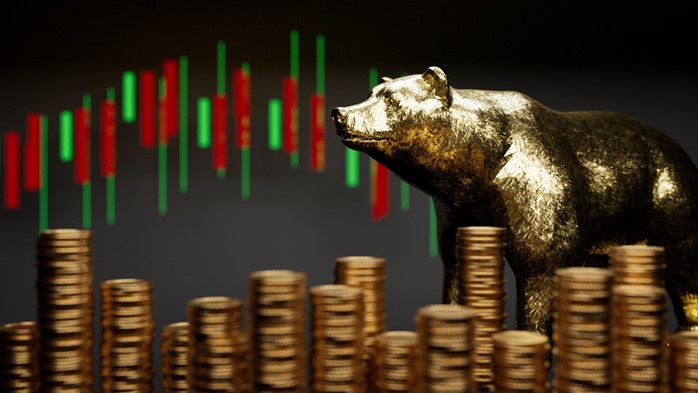
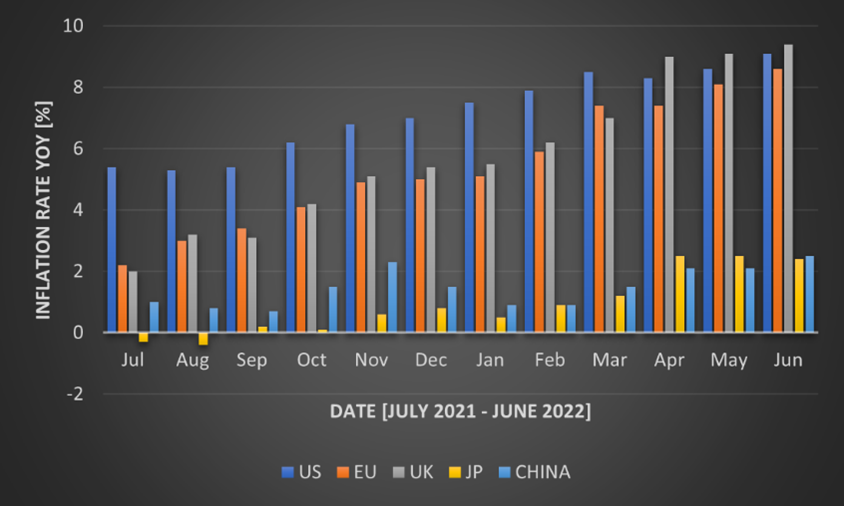
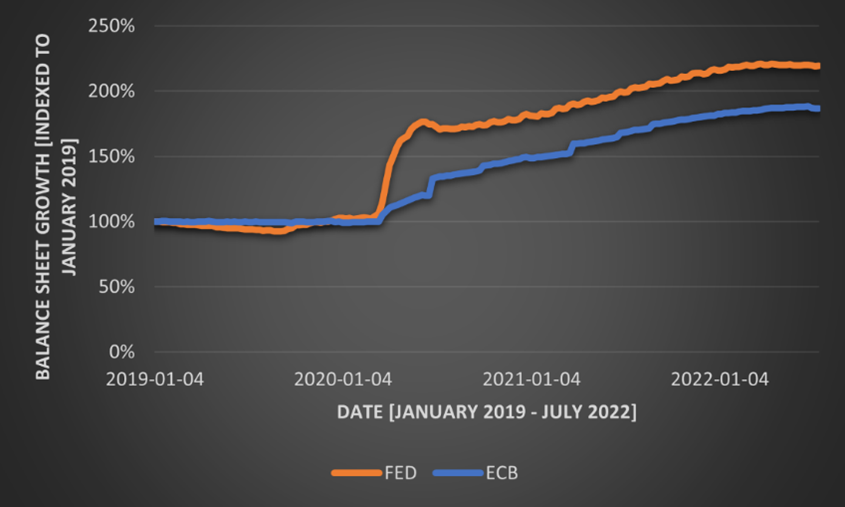

 RSS Feed
RSS Feed
